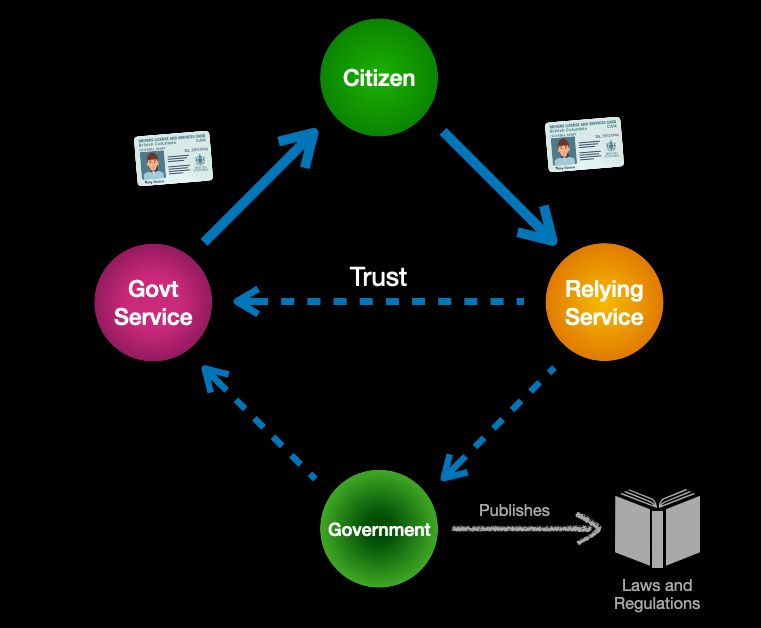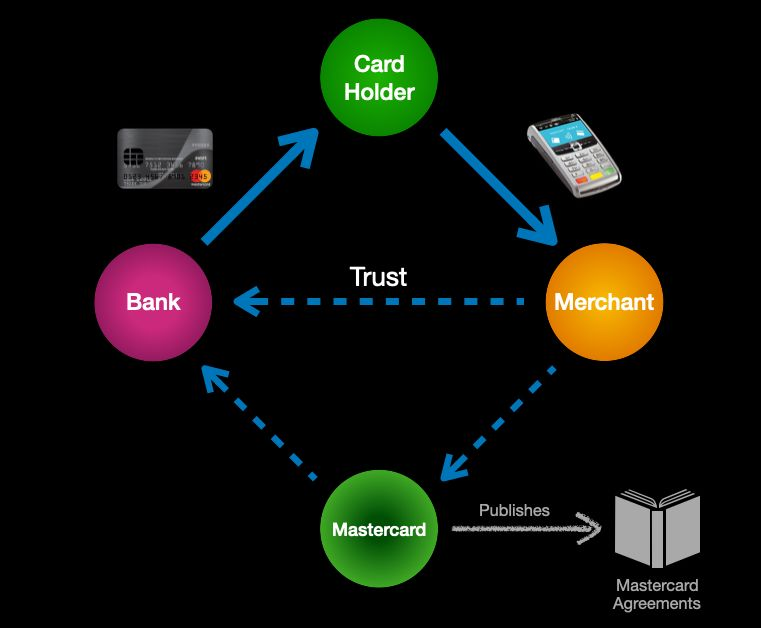The best-known example of governance trust triangles are credentials issued by national governments following their own laws and regulations. Many (but not all) countries issue national citizen ID cards, and almost every country in the world issues passports under the ISO/IEC 7810 ID-3 standard.

In these governance trust triangles, the government itself is the governance authority, the laws and regulations of the country are the governance framework, and the issuers are the various government services authorized to issue a specific type of credential. Citizens or businesses can obtain the credentials for which they are qualified and then present them to any relying service that trusts the government for the accuracy of the information on the credential.
Example: Payment Card Networks¶
Another widely-known example of the governance trust triangle is a payment card network like Mastercard. In this case, the governance authority is Mastercard; the issuers are the banks and credit unions in the Mastercard network; the holders are the individuals or businesses that apply for Mastercards; and the verifiers are merchants enrolled in the Mastercard network to accept payment cards as shown below.

Although government-issued IDs and credit cards are the most common examples of credentials we carry in our own wallets, there are hundreds of other examples of governance trust triangles all around us: health insurance cards, student ID cards, employment ID cards, membership cards, loyalty cards, etc. In every case, the value of the credential depends on the trust the verifier has in the governance authority.